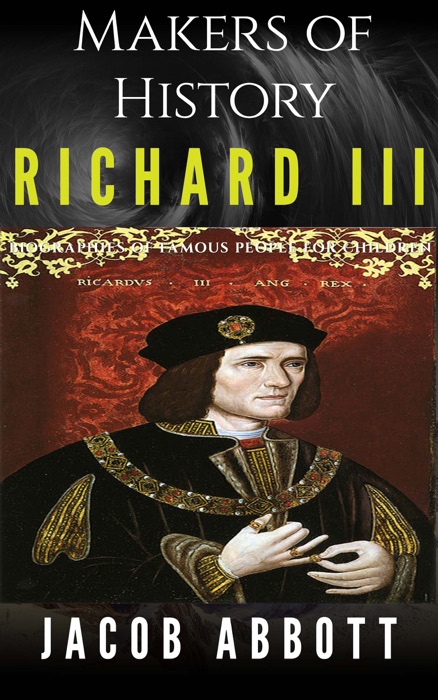(Download) "Makers of History - Richard III: Biographies of Famous People for Children" by Jacob Abbott " eBook PDF Kindle ePub Free

eBook details
- Title: Makers of History - Richard III: Biographies of Famous People for Children
- Author : Jacob Abbott
- Release Date : January 26, 1473
- Genre: Biography,Books,Young Adult,
- Pages : * pages
- Size : 3648 KB
Description
Richard III (2 October 1452 – 22 August 1485) was King of England from 1483 until his death in 1485, at the age of 32, in the Battle of Bosworth Field. He was the last king of the House of York and the last of the Plantagenet dynasty. His defeat at Bosworth Field, the last decisive battle of the Wars of the Roses, marked the end of the Middle Ages in England. He is the subject of the fictional historical play Richard III by William Shakespeare.
When his brother King Edward IV died in April 1483, Richard was named Lord Protector of the realm for Edward's son and successor, the 12-year-old Edward V. As the young king travelled to London from Ludlow, Richard met and escorted him to lodgings in the Tower of London, where Edward V's own brother Richard of Shrewsbury joined him shortly afterwards. Arrangements were made for Edward's coronation on 22 June 1483; but, before the young king could be crowned, his father's marriage to his mother Elizabeth Woodville was declared invalid, making their children illegitimate and ineligible for the throne. On 25 June, an assembly of Lords and commoners endorsed the claims. The following day, Richard III began his reign, and he was crowned on 6 July 1483. The young princes were not seen in public after August, and accusations circulated that the boys had been murdered on Richard's orders, giving rise to the legend of the Princes in the Tower.
Of the two major rebellions against Richard, the first, in October 1483, was led by staunch allies of Edward IV[1] and Richard's former ally, Henry Stafford, 2nd Duke of Buckingham;[2] but the revolt collapsed. In August 1485, Henry Tudor and his uncle, Jasper Tudor, led a second rebellion against Richard. Henry Tudor landed in southern Wales with a small contingent of French troops and marched through his birthplace, Pembrokeshire, recruiting soldiers. Henry's force engaged Richard's army and defeated it at the Battle of Bosworth Field in Leicestershire. Richard was struck down in the conflict, making him the last English king to die in battle on home soil and the first since Harold II was killed at the Battle of Hastings in 1066.
After the battle Richard's corpse was taken to Leicester and buried without pomp.[3] His original tomb monument is believed to have been removed during the Reformation, and his remains were lost for more than five centuries, believed to have been thrown into the River Soar.[4] In 2012, an archaeological excavation was commissioned by Philippa Langley on a city council car park on the site once occupied by Greyfriars Priory Church.[5][6] The University of Leicester identified the skeleton found in the excavation as that of Richard III as a result of radiocarbon dating, comparison with contemporary reports of his appearance, and comparison of his mitochondrial DNA with that of two matrilineal descendants of Richard III's eldest sister, Anne of York.[7][8][9] Richard's remains were reburied in Leicester Cathedral on 26 March 2015.[10] Richard III of England was confirmed to be haplogroup G2 (Y-DNA) and J1c2c (mtDNA).